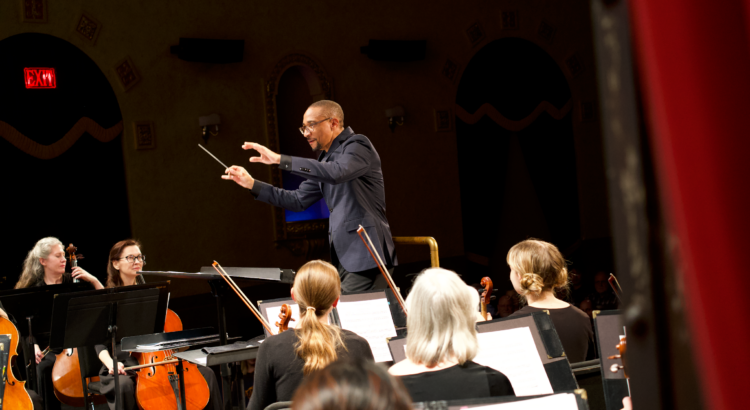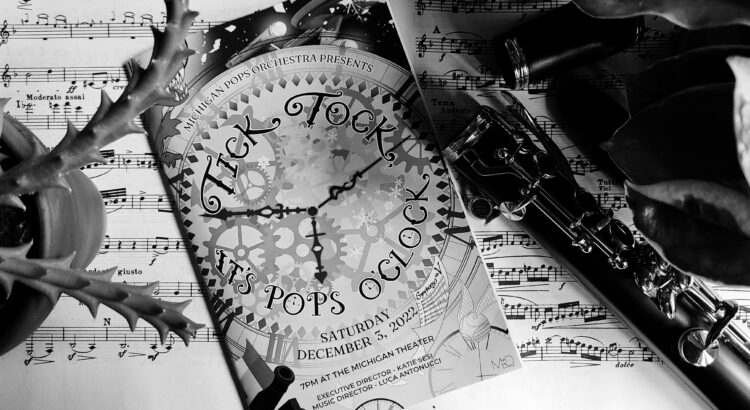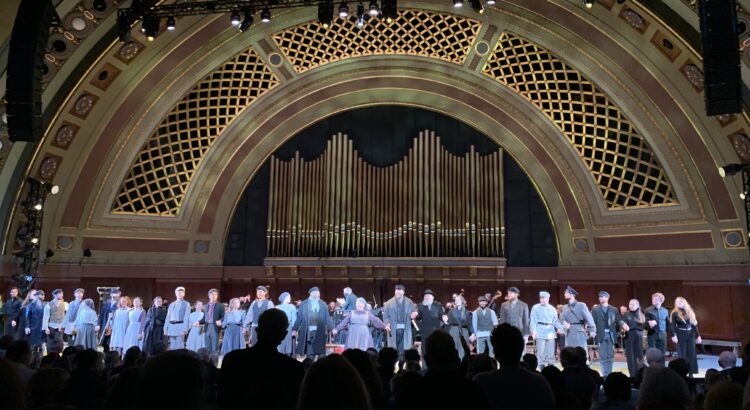On Saturday, October 19, I attended the Ann Arbor Symphony Orchestra (A2SO) concert celebrating the music of John Williams. As expected, given the popularity of one of cinema’s greatest composers, the line at the Michigan Theatre was incredible—possibly the longest I’ve ever seen for an A2SO concert. The crowd was notably diverse, with attendees of all ages, and I even recognized friends who don’t typically attend orchestra performances.
Under the baton of guest conductor Damon Gupton, the program showcased some of John Williams’ most famous works. The first half, in program order, included “Superman March” from Superman, “The Shark Theme” from Jaws, the main themes from Jurassic Park and Schindler’s List, “Devil’s Dance” from The Witches of Eastwick, “Love Theme” from Superman, and the “Throne Room & End Title” from Star Wars: Episode IV – A New Hope.
I loved seeing some musicians—and even some instruments—in costume on stage. Paired with the quick beat and lively brass in “Superman March,” it set high expectations from the start that this would be a fun and exciting concert. Damon Gupton’s theatrical side shone through as he conducted the iconic, suspenseful opening measures of “The Shark Theme.” With each new phrase in the music, he would glance apprehensively behind him, as if watching out for danger lurking—an amusing touch that drew laughter and reflected his background as an actor.
The order in which the repertoire was performed made me feel as though I were watching a movie, with each piece shifting the tone and taking me in a new direction. After Jaws, the uplifting main theme from Jurassic Park brought excitement, followed by the somber theme from Schindler’s List, which featured a sorrowful violin solo by the concertmaster. “Devil’s Dance” then introduced a thrilling energy that transitioned seamlessly into the sweet melody of “Love Theme,” before the first half concluded with the universally recognizable soundtrack from Star Wars.
The orchestra also performed the Olympic Fanfare and Theme, “Harry’s Wondrous World” from Harry Potter and the Sorcerer’s Stone, “Hymn to the Fallen” from Saving Private Ryan, “March” from 1941, “With Malice Toward None” from Lincoln, and finished the evening with “Adventures on Earth” from E.T. the Extra-Terrestrial.
Since I haven’t seen the films Olympic Fanfare and Theme, “March,” and “With Malice Toward None” come from, I had never heard them before. This allowed me to fully absorb the emotions conveyed by the music, without the influence of imagery associated with the movies. The catchy rhythms and bright trumpets in Olympic Fanfare and Theme and “March” made it easy to visualize social festivities. Meanwhile, the strings in “With Malice Toward None” evoked a strong bittersweet feeling.
On the other hand, I’ve already heard “Harry’s Wondrous World,” “Hymn to the Fallen,” and “Adventures on Earth” performed live by the Michigan Pops Orchestra (MPO), who also played the same versions of “The Shark Theme,” themes from Jurassic Park, and Star Wars from the first half of the concert. It was interesting to compare how the A2SO and MPO interpreted these musical scores. The MPO has a much larger string section, which allowed their strings to stand out more, while the winds shined more in the A2SO. Though each had a different dynamic, this experience only deepened my admiration for our school’s student orchestras, as I didn’t find them lacking in musical quality compared to a professional ensemble.
Overall, with its diverse selection of pieces, the Ann Arbor Symphony Orchestra’s performance felt like watching a film without the visuals, beautifully celebrating the genius of John Williams.
Pictures are provided by A2SO





